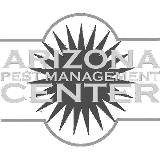Weed escapes are easy to spot in vegetable fields at harvest time. Some growers have these weeds pulled, bagged and removed by hand from the field because they are unsightly and to reduce seedbank loads. This can be a costly operation. An alternative solution might be to use high voltage electricity to kill these weeds. The idea of using electricity to “zap” weeds is not new. Machines for agriculture applications were developed decades ago and commercially available in the late 1970’s. Although the devices worked, they were not widely adopted due in part to the availability of low cost and efficacious herbicides.
Because of environmental concerns, herbicide resistant weed issues and increased organic production, non-chemical, high voltage weed control technology is seeing a resurgence. There are now five companies, three established within the last four years, offering or developing machines for commercial agriculture. Although configurations differ, all machines operate using the same principles. To explain, consider the example of the machine shown in Fig. 1. The unit comprises high voltage electrodes (8-15 kV) positioned above the crop canopy, an electric generator and a soil engaging coulter connected to ground. During operation, when an electrode touches a weed protruding above the canopy, current flows through the plant back to the generator via the ground contacting coulter. Current flow combined with electrical resistance in the plant causes rapid heating and plant fluids to vaporize. This ruptures cell walls and kills the plant. Although there are few recent reports in the literature, prior research on dated machines showed that the technique can provide better than 98% weed control in moderate weed densities (15,000 weeds/acre) at travel speeds of 2 mph (Diprose & Benson, 1984).
Modern approaches that utilize high voltage electricity in combination with smart machines to spot treat weeds are being developed. The idea is to use camera imagery and artificial intelligence to locate weeds and high voltage electricity to kill them. One such machine being developed by the MASCOR Institute1 and the Zasso Group is an autonomous robot equipped with cameras, on-board computers and robotic arms (Fig. 2). As the machine moves through the field, high voltage electrodes mounted on the movable, computer controlled robotic arms zap weeds. Another unit is being developed by Stekettee and RootWave. It is tractor pulled and designed to travel at 3 mph. Stekettee’s machine vision system identifies the weeds and RootWave’s high voltage electric technology shocks the weed with a pulsed 5 kV charge. Power is supplied by a generator connected to the tractor’s PTO. Both systems are in late stages of development with field tests conducted in 2020.
These systems appear promising and if they prove to be effective and economical, may be something to look for in the future.

1Reference to a product or company is for specific information only and does not endorse or recommend that product or company to the exclusion of others that may be suitable.





